Learning a new language can feel overwhelming, am I right? You start getting tons of apps, books, and gizmos shoved at you, all promising to finally get you fluent. But have you actually tried just...watching stuff with subtitles?
Yeah, I know what you're thinking - "How is a couple of subtitles going to help me master another language?" Hear me out. In 2016, a study showed that ESL learners improved their comprehension by 17% after just watching an episode with subtitles - one episode!
Using subtitles while watching shows and movies is like having your own immersive language tutor. With the words flowing alongside visuals you're already engaged with, plus storylines providing context, vocabulary and grammar get embedded in your brain much more effectively than simple rote memorization.
We're talking full comprehension locking in before you even realize you're actively "studying!"
Curious? Well, in this comprehensive guide, we’ll explore how to harness the power of subtitles and combine it with other language learning tools to achieve success in your foreign language journey.
Short Summary
- Subtitles offer an effective way to maximize language learning, with research showing that foreign-language subtitles are most beneficial.
- Choose suitable content and use subtitle activities to enhance your skills. Integrate textbooks and self-study materials for a successful experience.
- Balance subtitle use with other language learning tools such as classes or tutoring sessions, immersive experiences, and engaging in conversations with native speakers.
Maximizing the Benefits of Subtitles for Language Learning

Subtitles can significantly enhance language learning when used effectively. They offer a unique opportunity to focus on listening comprehension, expand vocabulary, and choose the appropriate type of subtitles for your proficiency level. Research shows that using foreign-language subtitles, like Spanish subtitles for learning Spanish, is typically more beneficial than native-language subtitles. By actively engaging with subtitled content, you can improve your listening skills, broaden your vocabulary, and strengthen your grammar.
For beginners, it might be challenging to keep up with the speed and timing of subtitles. But don’t worry! You can easily replay difficult sections or slow down the playback speed (if available) to successfully adjust the speed and timing of subtitles.
Choosing the right type of subtitles

When it comes to using subtitles for language learning, there are several types to consider: native language, reverse, and dual subtitles. Reverse subtitles allow viewers to experience a foreign language soundtrack with subtitles in their native language. They provide a comfortable environment for beginners to get familiar with the target language while passively learning vocabulary.
Dual subtitles, on the other hand, offer subtitles in both the foreign and native language, providing the most comprehensive information of all types of subtitles. To make the most of dual subtitles, focus on either foreign-language or native-language subtitles and refer to the other type when you need a translation for a specific case.
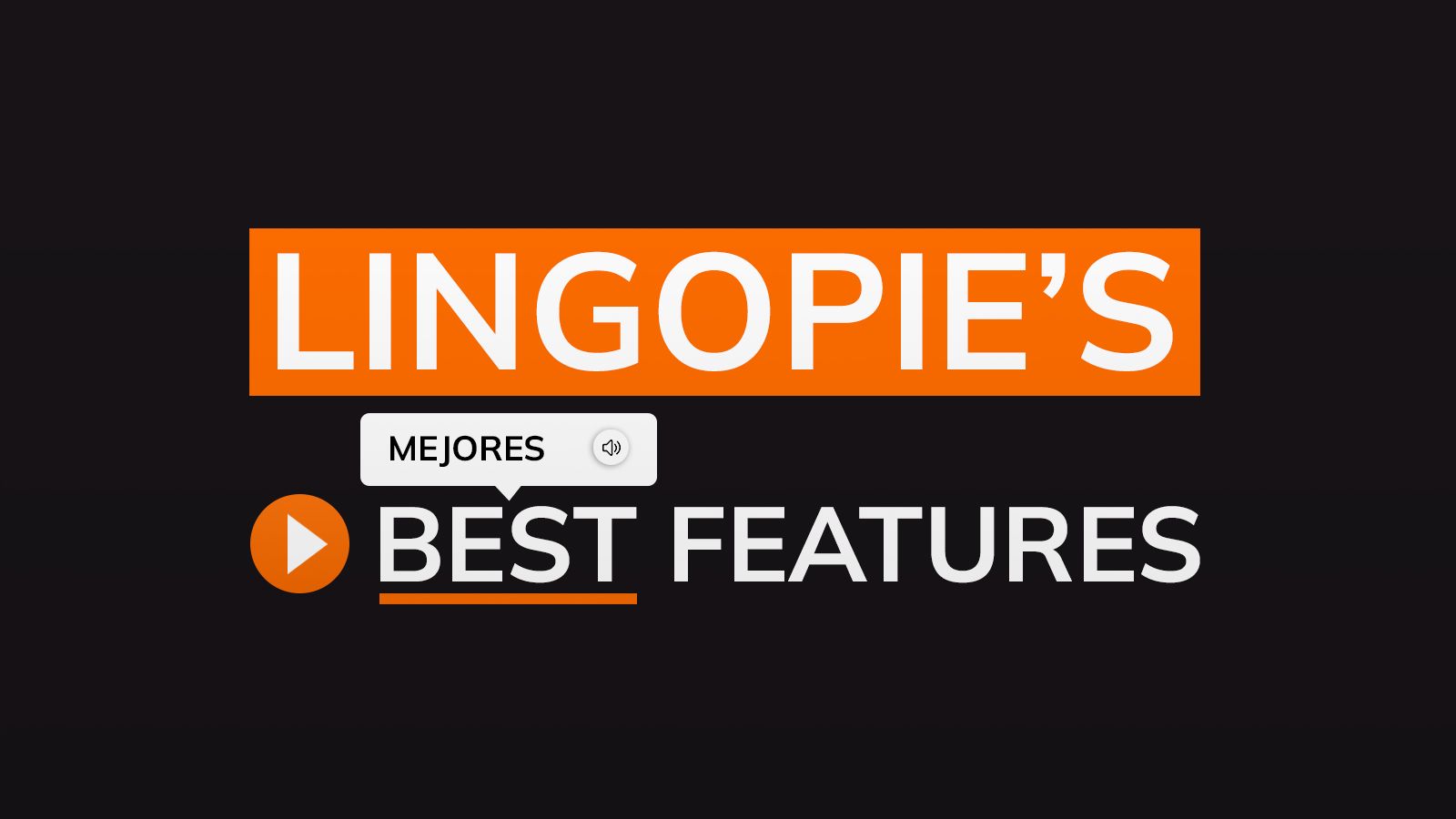
Some such as Lingopie, platforms provide dual subtitles. These allow you to get the foreign-language while still being able to view a native-language translation of certain words when you pause the show. This exciting feature gives viewers more flexibility in how they experience their content. The key to success with subtitles is motivation to actively participate in the learning process.
Focusing on listening comprehension
Understanding spoken language is one of the most rewarding aspects of learning a new language. By actively engaging with subtitled content, you can improve your listening comprehension, broaden your vocabulary, and participate in activities to strengthen your language skills. Reading subtitles while viewing content can assist language learners in recognizing and comprehending verb types, tenses, and phrases, resulting in improved overall comprehension. Subtitles improve word recognition and help learners better understand the language.
Language learners can start by watching content with subtitles and then gradually increase the amount of content they watch without subtitles. They can also watch content without subtitles and use subtitles as a reference when needed, allowing them to become more confident in their language skills. This strategy helps learners to rely less on subtitles while still benefiting from their advantages.
Expanding vocabulary through context
Subtitled content can also be an excellent resource for learning new vocabulary in context. This approach helps with retention and understanding of new words and phrases. When using subtitles, you can:
- Pay attention to the words and phrases used
- Note down unfamiliar words
- Look up their meanings
- Use the context provided by the subtitles to understand the meaning and usage of the words.
To gain a deeper understanding of words, look at the surrounding words and phrases, take note of the tone of the dialogue, and reflect on the context of the scene. To retain and practice new vocabulary, consider writing down new words and phrases, making flashcards, and having conversations with native speakers to get comfortable with the new words.

Selecting Suitable Content for Subtitled Language Learning

The key to successful subtitle-based language learning is selecting suitable content. Ideal content includes foreign-language material with foreign-language subtitles. Studies demonstrate that using foreign-language subtitles while watching videos or movies in the target language can significantly improve comprehension, grammar, and vocabulary skills. It is highly recommended to use subtitles in the same language as the audio to maximize language learning.
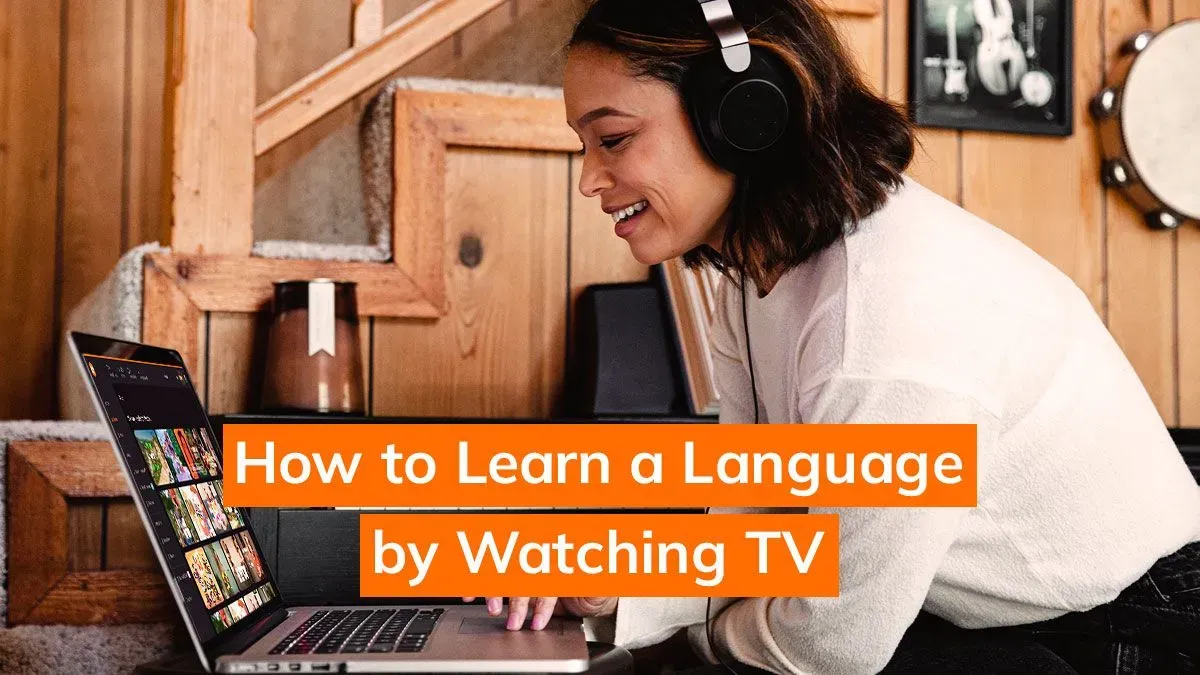
When choosing content based on language proficiency, it is beneficial to start with simpler content and progress to more advanced material for greater success. As you become more proficient, explore diverse genres and formats, such as:
- movies
- TV shows
- documentaries
- podcasts
All of which offer a wealth of potential for exciting discoveries.
Starting with simpler content
For beginners, it’s wise to begin with children’s shows or animated films, as they contain simpler vocabulary and a slower pace of speech. Simpler content enables you to concentrate on grasping the language rather than battling to comprehend complex vocabulary and sentence structure. Language learners can easily access simpler content by:
- Searching for foreign-language movies or videos with subtitles
- Taking advantage of captions for ESL learners
- Exploring various language-learning websites and apps
By starting with simpler content, you can gradually build your confidence and proficiency in the language. As you progress, you can explore more challenging material, which will further enhance your language skills and comprehension.
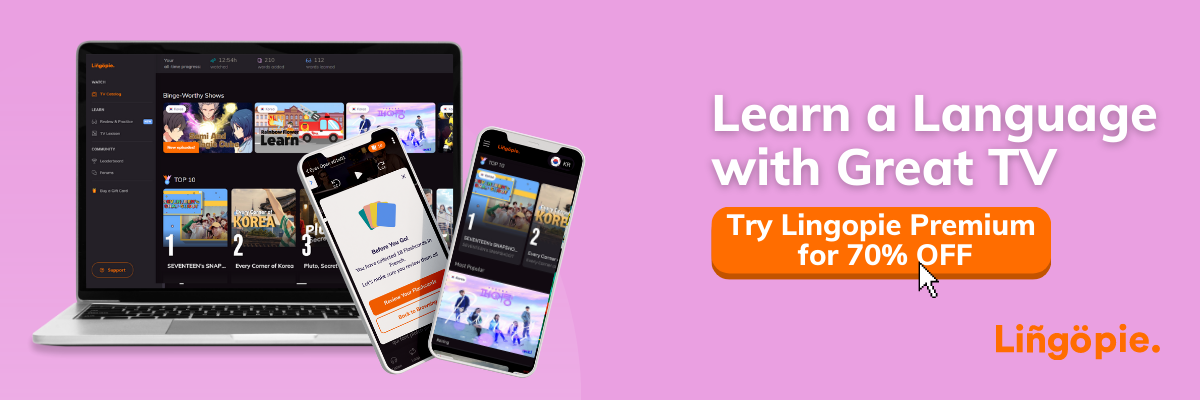
Progressing to more advanced material
Your ability to understand and comprehend is constantly growing. As you improve, take on the challenge of more difficult topics such as dramas, documentaries, and films. Using foreign-language subtitles when watching foreign-language material is a great way to enhance language comprehension and vocabulary as you progress to more advanced material for subtitle-based language learning. Additionally, incorporating english subtitles can be helpful in bridging the gap between your native language and the foreign language you are learning.
Watching subtitled content at a higher level can also improve your listening and speaking skills, as you’ll be exposed to more authentic language and cultural nuances. Remember to challenge yourself, but don’t be afraid to adjust the difficulty level if needed. Ultimately, the goal is to make the most of the subtitled content to support your language learning journey.
Exploring diverse genres and formats
To keep your language learning journey engaging and diverse, consider exploring various genres and formats. Watching movies, TV shows, documentaries, news broadcasts, podcasts, and even audiobooks with subtitles can expose you to different language styles and cultural nuances. This variety will help you become more knowledgeable about various aspects of the language and culture, and it can also help you become more confident with different types of content.


By diversifying your content consumption, you’ll ensure that your language learning experience remains fresh and exciting. Moreover, you’ll continue to expand your vocabulary and improve your language skills in various contexts.
Lingopie also offers Lingopie Music, a product enabling you to learn a new language by listening to music in your target language with all the integrated language learning tools.
Enhancing Language Skills with Subtitle-Based Activities
In addition to using subtitles for language learning, you can also enhance your language skills with subtitle-based activities. These activities can help you to further develop your listening comprehension, broaden your vocabulary, and participate in activities to strengthen your language skills. Some examples of subtitle-based activities include shadowing dialogue, taking notes while watching subtitled content, and engaging in conversations with native speakers.
By actively participating in these activities, you’ll reinforce the language skills you’ve acquired through subtitled content and continue to progress on your language learning journey.
Lingopie creates activities for you based on the words you've clicked in the past and makes lessons and quizzes from them in order to provide a tailored language learning experience.
Shadowing and mimicking dialogue
Shadowing and mimicking dialogue are two powerful techniques to improve your pronunciation, intonation, and rhythm. Shadowing involves listening to a native speaker or audio recording and simultaneously repeating what you hear, focusing on the sounds, rhythm, and intonation of the language.
Mimicking dialogue, on the other hand, involves imitating and replicating the dialogue or conversation of native speakers to achieve the natural flow, tone, and expressions used in the language. By practicing shadowing and mimicking dialogue from subtitled content, you can improve your speaking skills and gain confidence in your ability to communicate effectively in your target language.
Taking notes and creating flashcards
Taking notes while watching subtitled content can be an effective way to enhance knowledge retention. Write down new words or phrases you encounter and look up their meanings if necessary. You can also create flashcards for new vocabulary and phrases, which will help you to review and practice them later.
This active engagement with the material will not only aid in retaining new vocabulary, but also reinforce the context in which the words are used, ultimately improving your understanding of the language.
Lingopie creates the flashcards for you after you've clicked on a word you didn't understand. It saves the word in order to create a flashcard and later the platform can create tailored lessons for your level.
Engaging in conversation with native speakers
To truly put your language skills to the test, engage in conversations with native speakers. Use the vocabulary and phrases you’ve learned from subtitled content to communicate effectively in real-life situations. This practice will help you become more comfortable with the language and gain confidence in speaking.
By engaging in conversations with native speakers, you’ll receive valuable feedback on your language skills, allowing you to identify areas for improvement and further enhance your language proficiency.
Work in Short Bursts
Don't make the mistake of subtitle-bingeing for hours on end. Just like any intense learning experience, you'll get drastically better results by working in focused short bursts rather than overloading your brain.
The key is to treat subtitle viewing as a form of high-intensity study, where you're giving your full, undivided attention. Anything more than 30-45 minutes in a single session and you'll start to lose focus and retention.
Instead, I recommend scheduling a couple of shorter, dedicated "subtitle sprints" per week. During that time, you're laser-focused - putting on the subtitles, grabbing some handwritten notes, and truly concentrating as you take in every nuance of dialogue and context. Then, give your mind a break before coming back for another quality session.
This spaced repetition approach, using subtitles as a focused learning tool, is incredibly effective for rapidly building vocabulary and comprehension without burnout. You'll be amazed at how quickly you can make monumental progress when applying that level of undivided attention, even for just a little bit at a time.

Resources for Finding Subtitled Content in Your Target Language
Finding subtitled content in your target language is easier than you might think. There are numerous resources available, including streaming platforms with multilingual subtitles, language-learning websites and apps, and YouTube channels that offer subtitled content in various languages. By taking advantage of these resources, you can access a wealth of material to support your language learning journey.
Explore these resources to discover content that is most suited to your proficiency level and learning objectives. The right subtitled content can keep you engaged and motivated, ultimately enhancing your language learning progress.
Streaming platforms with multilingual subtitles
Several streaming platforms offer a wide range of movies and TV shows with multilingual subtitles. Some of these platforms include:
- Disney+
- Apple TV+
- Netflix
- Hulu
- Amazon Prime
- Lingopie
These platforms provide a fantastic selection of content in various languages, enabling you to gain language knowledge while having fun watching your favorite content.
By exploring these streaming platforms, you’ll have access to a vast library of subtitled content that caters to different proficiency levels, preferences, and interests. This will allow you to find material that is both entertaining and educational, helping you to stay motivated in your language-learning journey.
Lingopie is created for the purpose of learning languages with subtitles. It provides a wide array of language learning tools supporting the language learning process through multimedia.
Language-learning websites and apps
Language-learning websites and apps such as:
- Lingopie
- Duolingo
- Babbel
- Drops
- Mondly
- Memrise
- Busuu
- Lirica
Offer subtitled videos specifically designed for language learners. These websites and apps provide a variety of content, from beginner-friendly videos to more advanced material, catering to different proficiency levels.
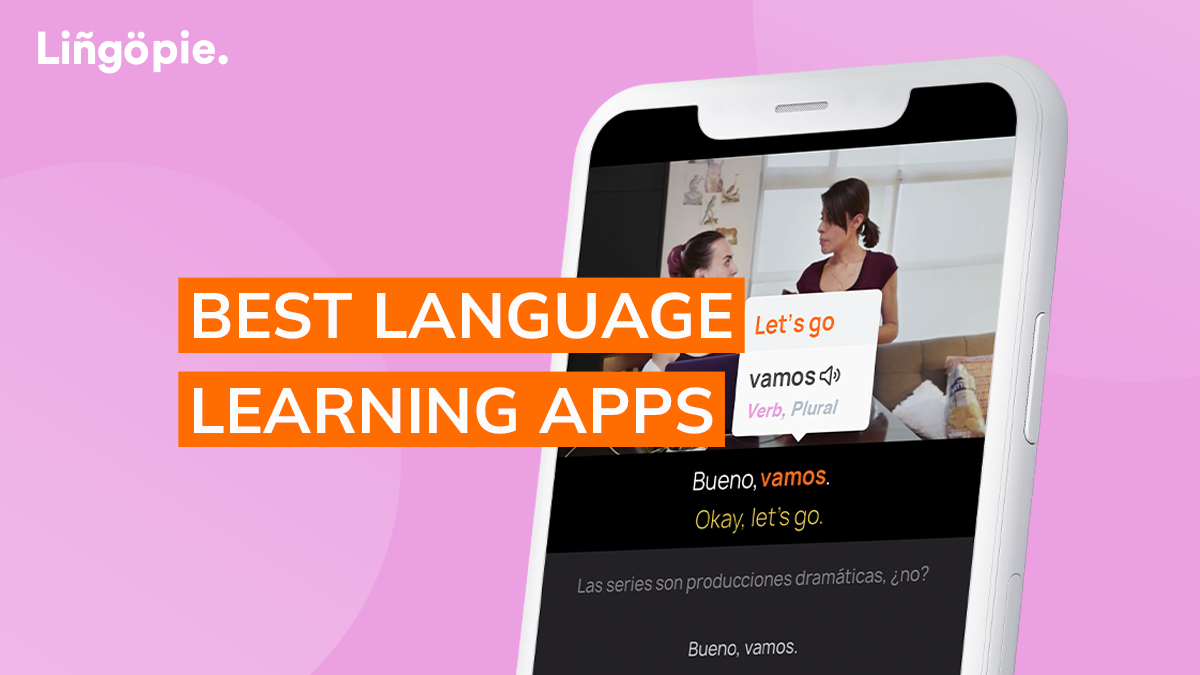
By using language-learning websites and apps, you can access content that is tailored to your learning needs and preferences. This will help you stay engaged and focused on your language learning goals while enjoying the benefits of subtitles.
Language learning with Netflix

Of course, it's the best possible experience to be captivated by amazing binge worthy shows which will also improve your language skills. With Lingopie, the possibilities for language learning are limitless. Dive into selected Netflix shows and turn entertainment into education. Immerse yourself in captivating narratives while honing your language skills. Unlock a new way to learn and make the most of your screen time with Lingopie's curated language-learning experience.

YouTube channels and other online video sources
YouTube channels and other online video sources offer a vast array of subtitled content in various languages. Here are some steps to find subtitled videos.
- Browse channels that specialize in providing subtitled content.
- Search for specific topics to find videos that interest you.
- Be cautious of auto-generated captions, as their accuracy may not always be reliable.
By exploring YouTube channels and other online video sources, you can discover a wealth of subtitled content that caters to your language learning needs. These resources provide an excellent opportunity to enhance your language skills while enjoying diverse and engaging content.

Balancing Subtitle Use with Other Language Learning Tools
While using subtitles can be an effective and enjoyable way to learn a new language, it’s essential to balance your use of subtitles with other language learning tools. Integrating textbooks and self-study materials, participating in language classes or tutoring sessions, and engaging in immersive experiences can all contribute to a well-rounded language learning experience.
By combining subtitle use with other language learning tools, you’ll ensure that you’re not only improving your listening comprehension and vocabulary, but also strengthening grammar, language structure, and other essential aspects of language learning.
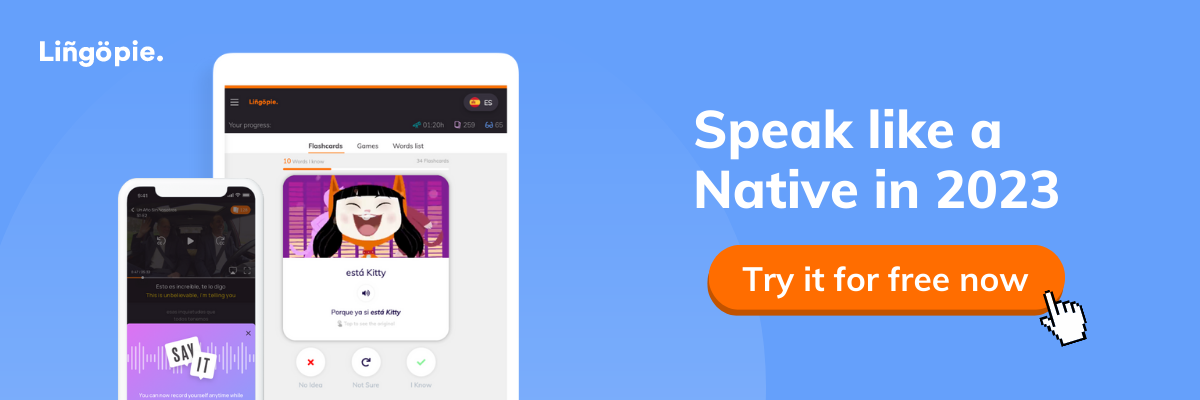
Integrating textbooks and self-study materials
Textbooks and self-study materials can be an excellent complement to subtitle-based language learning. They can help reinforce grammar, vocabulary, and language structure, providing a solid foundation for your language skills. The Genki series, for example, is a popular choice for learning Japanese, and there are numerous textbooks available for different languages that can be used with subtitles.
By integrating textbooks and self-study materials into your language learning routine, you can further strengthen your understanding of the language, ensuring that you’re fully prepared to tackle more advanced content and real-life situations.
Participating in language classes or tutoring sessions
Language classes and tutoring sessions can provide personalized instruction and feedback, allowing you to focus on the areas that need the most improvement and get the most out of your language learning experience. Platforms like Preply and Lingopie offer online language courses with experienced tutors and amazing teachers, respectively.
By participating in language classes or tutoring sessions, you’ll receive valuable guidance and feedback on your language skills, allowing you to identify areas for improvement and further enhance your language proficiency.
Engaging in immersive experiences
Immersive experiences, such as language exchanges or travel, allow you to practice your language skills in real-life situations. Experiencing the language in a natural context helps reinforce the skills you’ve acquired through subtitled content and other language learning tools, making learning languages more effective.
By engaging in immersive experiences, you’ll gain invaluable exposure to native speakers and authentic language use, bolstering your confidence and proficiency in your target language.
Summary
In conclusion, using subtitles for language learning can be a fun and effective way to improve your listening comprehension, expand your vocabulary, and achieve language fluency. By combining subtitle use with other language learning tools such as textbooks, language classes, and immersive experiences, you can create a well-rounded, engaging, and successful language learning journey. So grab some popcorn, turn on those subtitles, and start exploring the world of foreign languages through your favorite movies and TV shows! Try Lingopie's free 7-day trials and discover the world of subtitles language learning the easy way.
Frequently Asked Questions
Can you learn a language through subtitles?
Yes, you can learn a language through subtitles. Watching TV shows with subtitles accelerates the learning process by 50%, as it allows your brain to concentrate on the action on the screen while the subtitles are additional information.
Subtitles are an effective way to reinforce foreign language learning, making them a great aid in the language learning journey.
Is it better to learn Spanish with or without subtitles?
Learning Spanish with subtitles can benefit even new learners, as they provide assistance in keeping up and identifying words you don’t know. Though it may be difficult at first, it is worth the effort for continued language acquisition.
Is language learning with Netflix free?
Yes, language learning with Netflix is free! You can opt for an upgrade to even more quickly improve your skills.
Can Netflix do double subtitles?
Yes, Netflix can do double subtitles and make your viewing experience an even better language-learning tool.
How can I choose the right type of subtitles for my language-learning needs?
Choosing the right type of subtitles for your language learning needs depends on your proficiency level and learning goals. Consider native language, reverse, or dual subtitles to get the most out of your language-learning journey! Native language subtitles are great for beginners, as they provide the original language audio with the translated text. Reverse subtitles are great for intermediate learners, as they provide the translated language audio with the original original.


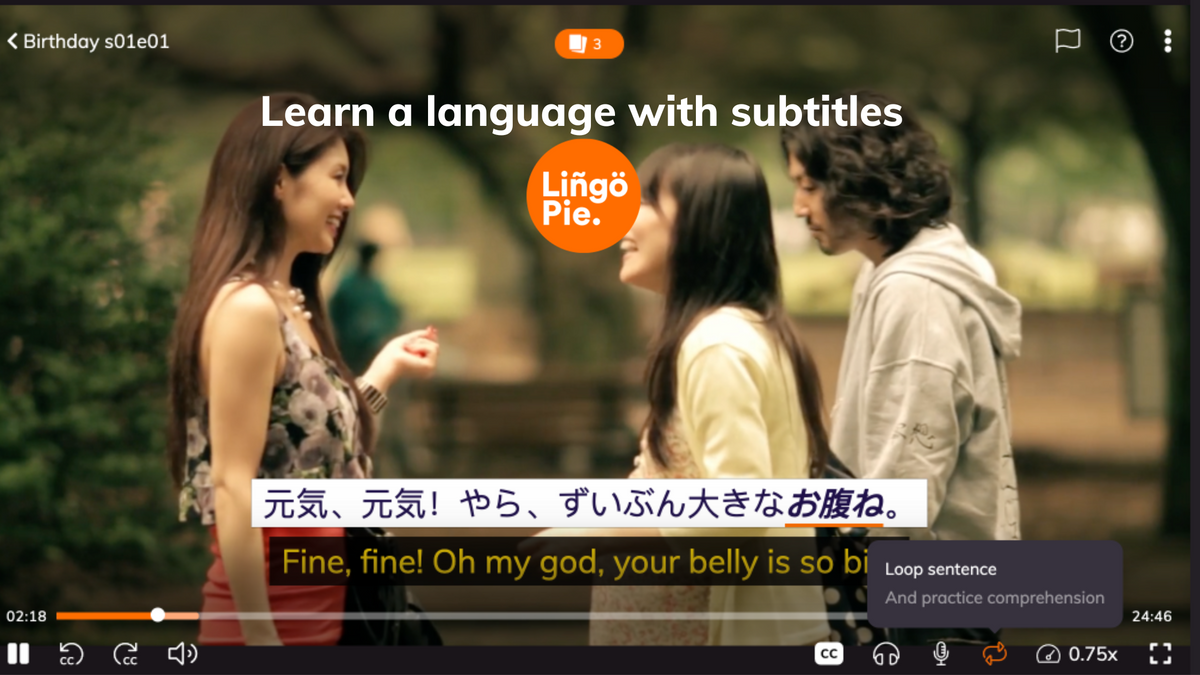


![10 Best Movies & Shows to Learn Japanese on Netflix [For Beginners]](/blog/content/images/2023/06/ADAE6E7D-E5AA-4A33-A1B2-A9324CA0E8C2.png)

![4 Hacks to Learn English With Movies [2025 Guide]](/blog/content/images/size/w300/2023/10/88AAD01A-8BF3-4648-82CC-639C1B240C28.png)
![Language Difficulty Ranking For English Speakers [2025]](/blog/content/images/size/w300/2025/05/Language-Difficulty-Ranking----For-English-Speakers.png)
![Language Learning with Netflix [2025 Guide]](/blog/content/images/size/w300/2023/05/Netflix-AD.jpg)
